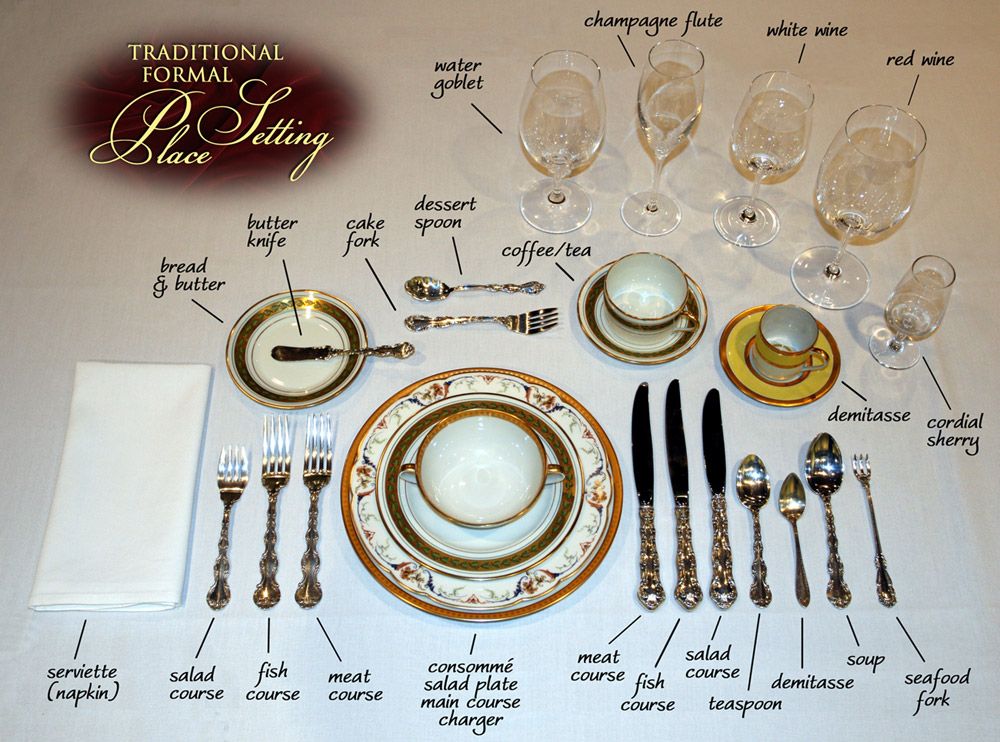The Complex, Context and Cognitive Gaps
What is the most simple supply chain?
That is not an easy question to answer. We may be able to define what a simple supply chain looks like, but we have some difficulty with an example. Let’s first define a simple supply chain as the most simple connection between two nodes, from the supply node to the demand node. What we have just described is a link, a single connection from the source to the demand points.
Complexity of Eating?
 As an example, imagine feeding yourself a plate of food. That should be simple enough — you just shovel your chow from the plate to your mouth, right? Wrong. The shovel method may be acceptable for camp food, your morning cereal, or for soldiers eating field rations, but it is wrong for a formal dinner with your boss, and it is very wrong for dinner with the Queen.
As an example, imagine feeding yourself a plate of food. That should be simple enough — you just shovel your chow from the plate to your mouth, right? Wrong. The shovel method may be acceptable for camp food, your morning cereal, or for soldiers eating field rations, but it is wrong for a formal dinner with your boss, and it is very wrong for dinner with the Queen.
Our simple supply chain is quickly becoming more complex. The context of the meal adds to the complexity. If the meal is our breakfast cereal, there is an easy context, simple requirements, and rapid consumption. The context changes when the meal becomes dinner with the boss. We can’t just shovel the food from the plate to our mouth. The meal will involve cocktails, menu decisions, and some skill with a steak knife. Our bowl of cereal lasts only five minutes. Dinner with the boss lasts perhaps an hour or two.
How complex is dinner with the Queen? Forget the decorum of proper conversation; there are 13 different utensils, four plates, two cups and saucers, and five different stemware glasses arranged in front of you. Which fork do you use for the salad? Which knife for the fish? Without a guide like the photo here, or previous training, you might use the wrong utensil for the wrong dish.
Complexity and context combine to create cognitive gaps. While we want to have simplicity in our lives, a certainty that we always know what is going on, we have a human emotional need for variety, for uncertainty. Uncertainty adds the spice that makes life interesting. Why do formal dinners use so many plates and utensils? People in Europe did not start using forks until the early 18th century, when wealthy people began using them to show off. The Victorian era brought the use of specialized utensils, mainly because the people of that era loved the idea of complexity, the need for a variety of different utensils for special purposes. The Victorians wanted to appear to be more stylish, more sophisticated. Wanting more variety, they invented special utensils to create challenges, and to one-up the next person.
Cognitive Gaps
What do you do when you find yourself at the table in a formal dinner? With the array of utensils before you, what do you do? Unless you have experienced a formal dinner before, even if you have studied dinner etiquette, you face a cognitive gap in understanding what is expected of you. Books may cover the rules of engagement with utensils, and they may give you clues to aid your selection of utensils, but books can’t give you experience.
It is the social experience of being in the setting, being present in the place of the activity, that gives us better understanding and gives us the context of the moment. If your only experience with professional football is watching it on television, you can’t understand the power and excitement of the live event. Being present for the event, live, provides an opportunity to experience greater context value than listening to the radio, watching television, or reading a book. Your ability to gain context through the eyes of others depends on the ability of those people to express the whole. The lenses others use to see the event, and the words and images they choose, create cognitive gaps.
Perhaps the reason employers place so much emphasis on experience in a specific field or a specific narrow segment of industry when looking for new managers is their perception of the cognitive gap. While somebody from outside the narrow field can produce different results, hiring managers who fear failure will hire people with domain-specific experience. The fear of failure can create a situation that ensures failure, because reliance on domain experience can stifle creativity.
Returning to the formal dinner table, deciding which utensil to use could be as simple as following the leader — in this case, the host or hostess of the table. Following the leader simplifies the decision making process, enabling you to avoid the social risk of looking ignorant to the host. Moreover, you avoid the risk of making the host look ignorant when they choose the wrong utensil. There is a balance of risks and tradeoffs in following the leader: the leader may be technically wrong, but following the leader avoids social embarrassment for all concerned. A third dimension of risk remains with this tactic, however: the risk that mistakes might cause harm or danger to the group.
Cognitive gaps are like dual-edged swords — the risks and rewards cut both ways. A cognitive gap creates opportunity for learning, and creates opportunity for repetition. I like to think of mistakes as learning opportunities, because we learn more from our failures than we learn from our successes. The overriding desire to avoid errors stresses risk avoidance, and clips the wings of learning.
Training Without Cognition
In past articles, I have asserted that training is necessary but insufficient. Training is necessary to program people to execute tasks following a specific process. But training is not teaching. Training covers the micro-level what to do, but fails to explain the why.
I even put this notion into a formula, training = programming.
Putting it into a memorable form, training is nothing more than programming the MK1 Human Being to perform a specific set of sequential tasks. Training is the “just do this” form of instruction. Training focuses on specific tasks, in a specific order, with specific tools for a specific application. Training seldom teaches people to make decisions, to make choices.
The typical training course as presented today in business does not include a lab, the opportunity to put classroom instruction into practical application. If we look at typical WMS training programs, classes and manuals detail sequential steps, with well-written step-by-step instructions, screen captures showing the data entry fields, and illustrations of the keyboards and labels. But we will not find anything in these manuals that tells us why we must execute these specific steps.
We learn the why from our experience of failure, and from the experience of those who went before us. We can read books and manuals to gain knowledge about a subject. Those books and manuals, created through the lenses of others, may provide sufficient information for us to understand the why. We can attend lectures, or watch videos that present the material, and that may be sufficient for us to understand the why. However, nothing bridges the cognitive gap better than the experience of being there, being in the situation, and solving the problem. Even with the most skilled writers or teachers, we can’t understand the kick of the gun, the feel of the controls, the noise of the machines, the heat of the battle, unless we are actually present in the place of the action, the gemba.
The military understands the value of live training. Military training includes time on the firing line, time driving tanks, flying aircraft, and firing mortars. Live ammunition training exercises, war games, and mock battles all help to drive home cognitive knowledge of combat. Still, soldiers are untested until they actually engage in battle, facing an enemy — and the risk of failure. No amount of training offsets the reality of battle.


